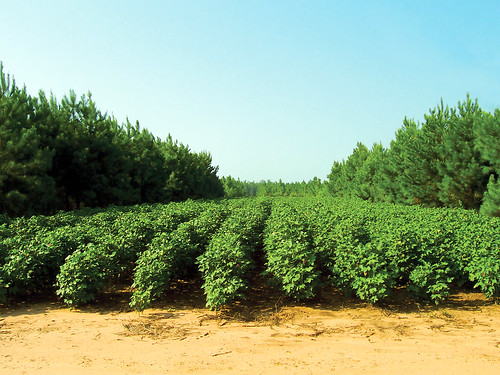
Introduction
The future of agriculture and its sustainability hinges on the ability to reconcile the necessity for food production with the preservation of our planet’s integrity. As we face global challenges with the population surging towards 9 billion by 2050, the challenge of feeding the world in an environmentally friendly and socially equitable manner becomes increasingly paramount. One promising approach is agroforestry, which incorporates the principles of ecology into farming systems, providing a viable path towards food freedom and organic sustainability, addressing both environmental and social change.
Understanding Agroforestry
What is agroforestry? Agroforestry refers to the intentional integration of trees and shrubs with crops or livestock. This strategic coexistence of agriculture and forestry technologies on the same plot of land can result in more diverse, productive, and sustainable land-use systems. By mimicking nature’s functions, an agroforestry system has the potential to deliver not only food but also a range of ecosystem services, defining agroforestry as a key player in sustainable farming.
This unique farming practice, agroforestry, can be seen as a step towards organic farming, which is generally associated with more sustainable outcomes, fostering higher biodiversity, and improved soil quality. However, the meaning of agroforestry goes beyond the organic approach, introducing a more integrated, multifunctional system that can enhance conservation outcomes while sustaining farms, ranches, and homes through effective management practices.
The Benefits of Agroforestry
1. Enhanced Biodiversity
Agroforestry systems, with their diverse agroforestry trees, increase biodiversity by creating habitats for a variety of plant and animal species. The trees and shrubs incorporated into these systems provide food and shelter for a range of organisms, from insects and birds to larger mammals, playing a crucial role in biodiversity protection.
2. Improved Soil Health
Trees and shrubs in agroforestry systems enhance soil health by increasing organic matter and nutrient content, reducing soil erosion and improving soil fertility. Deep-rooting trees can access nutrients from deeper soil layers, which are then made available to crops and livestock through leaf litter fall and decomposition.
3. Carbon Sequestration
Agroforestry systems contribute significantly to climate change mitigation through carbon sequestration. The trees and shrubs in these systems absorb carbon dioxide from the atmosphere, storing it in their biomass and the soil, playing a crucial role in combating climate change.
4. Increased Productivity
By optimizing the use of land, agroforestry systems can lead to increased productivity and economic benefits. The integration of crops, livestock, and trees allows for multiple products to be harvested from the same plot of land, enhancing both annual and long-term income generation and promoting multifunctional land use.
5. Resilience Against Climate Change
Agroforestry systems enhance resilience against climate change. The diversity of plant species and the presence of trees can buffer against extreme weather events and changes in climate, providing a more stable environment for crop and livestock production.
Types of Agroforestry Systems
Depending on the specific needs and conditions of a farm, various examples of agroforestry systems can be implemented:
1. Silvopasture
Silvopasture, an example of agroforestry, combines trees with a livestock operation by managing forage, livestock, and trees on the same plot of land. It provides shade and shelter for livestock while benefiting forage production, promoting efficient livestock grazing and fodder production.
2. Alley Cropping
In the practice of alley cropping, crops are cultivated between rows of fruit trees, which can be harvested for timber, fruits, and nuts. The crops offer short-term income, while the tree yield provides longer-term revenue.
3. Riparian Forest Buffers
Riparian forest buffers, which contain trees, shrubs, and grasses, are strategically situated next to rivers, streams, and lakes. These buffers enhance water infiltration and protect aquatic resources by filtering nutrient runoff from farms and preventing erosion.
4. Forest Farming
Forest farming, a practice that involves growing and protecting high-value specialty crops under the forest canopy, can provide an additional source of income and help conserve species in the landscape. This method of forest farming can contribute to the preservation of the landscape.
5. Windbreaks
Windbreaks, also known as shelter-belts, are plantings of single or multiple rows of trees that shelter crops, soil, animals, homes, and people from wind, snow, dust, or odors, thereby saving energy and improving crop yields.
Agroforestry and Food Sovereignty
Food sovereignty, a concept that refers to the right of individuals and communities to define their own food systems, is significantly promoted by agroforestry. By promoting diversified, sustainable, and locally-controlled food production, agroforestry plays a crucial role in achieving food sovereignty and its associated social benefits. The integration of multiple crops and livestock within the same system can enhance food security and nutritional diversity, enabling communities to become less dependent on global food markets.
Barriers to Agroforestry Adoption
Despite the numerous benefits, the adoption of agroforestry faces several barriers. These include lack of knowledge and skills, initial costs and longer return on investment, lack of market for agroforestry products, and policy constraints. However, with adequate support, research, and development, these barriers can be overcome. For instance, education and training can equip farmers with the necessary skills, while policy incentives can make it more economically viable to adopt agroforestry practices.
The Future of Agroforestry
The future of agroforestry looks promising. With increasing awareness of its environmental and Sustainability benefits and growing support from policymakers and consumers, the practice is set to become more mainstream. As climate change continues to pose challenges to agriculture, agroforestry offers a resilient and sustainable solution that can help secure our food future while protecting the environment.
Conclusion
In the quest for food freedom and organic sustainability, agroforestry emerges as a powerful solution. By integrating trees and shrubs with crops or livestock, agroforestry harnesses the power of nature to deliver both food and ecosystem services. As we face the unprecedented task of feeding a growing population in a changing climate, agroforestry offers a promising path towards a more sustainable, resilient, and equitable food future.
